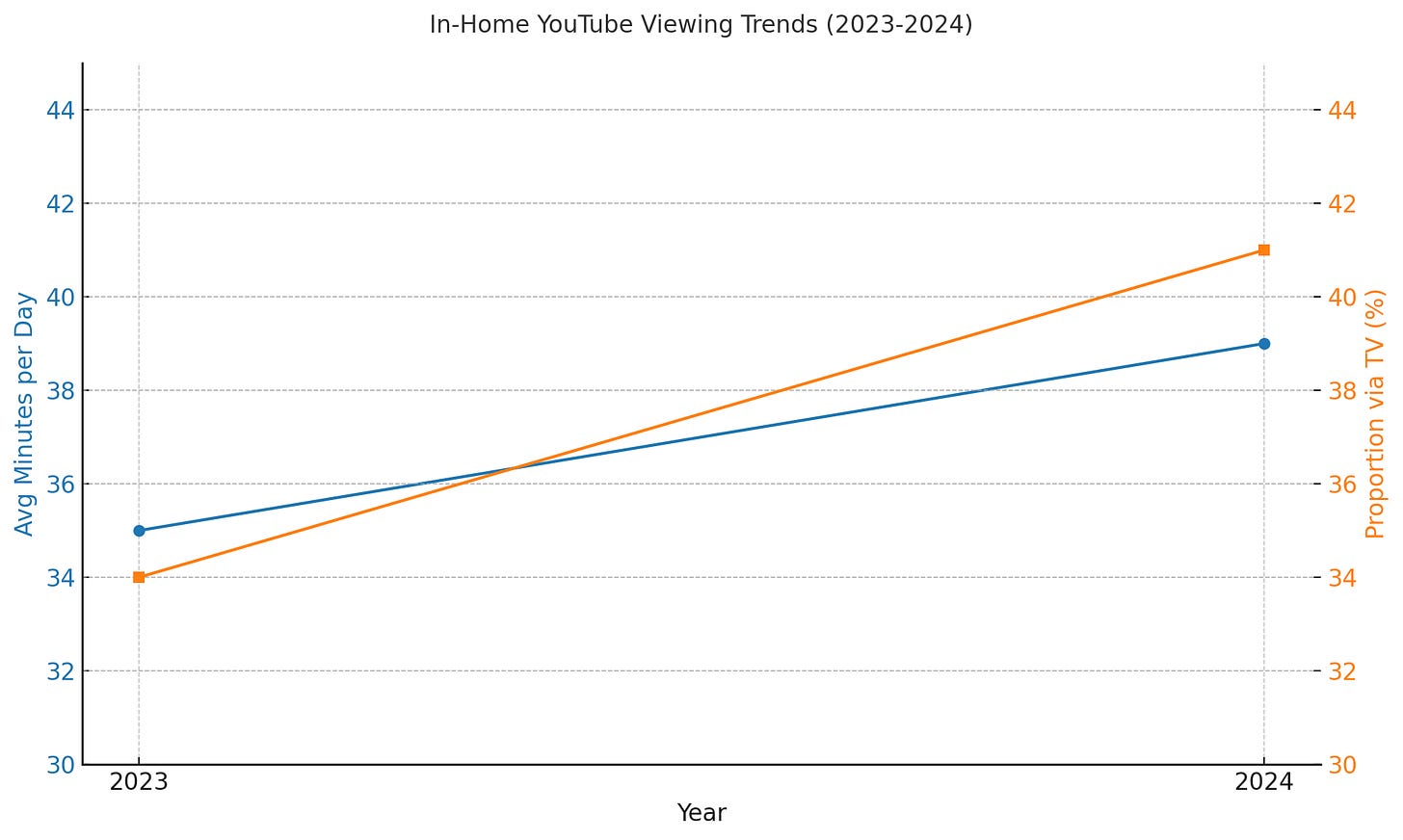Old content, new cash: five ways to turn your archive into YouTube gold
How to improve your archive revenue stream
More than two decades ago, a grainy 19-second clip of elephants at the zoo became the first-ever video uploaded to a new site called YouTube. Hardly groundbreaking, but it kick-started a new digital era.
Fast forward to today and YouTube has evolved into the streaming powerhouse we all know, and lose sleep to. It’s also the place people rediscover that one show they swear used to be on telly back in the day when Masterchef’s biggest headache was the departure of Loyd Grossman.
So maybe it’s time to dig into what you already own in your archive. In the world of iPad kids and scroll fiends, what cash you have in your digital attic could be lucrative.
With a step-by-step guide and insights from Little Dot Studios, Cowshed Collective, and industry veteran Luci Sanan, we break down how to improve your archive revenue stream.
In today’s The Indie Hustle, you will learn:
How to revive and build your archive portfolio tailored for YouTube
How to curate programming and work the algorithm to find your core audience
The best strategy tips and tricks to optimise content performance
How to make new money from old content
A method for growing your YouTube network like a pro
Read on for the full story.


Nostalgia sells and the security of ‘oven-ready’, pre-tested formats means archive is big business. But how can you best capitalise on your intellectual property and boost profits? Follow our prompts for a fresh look at what you own and how to crack distributing it on YouTube.
Building your catalogue and breathing life Into archive
Sounds obvious, but make sure you actually have an archive to cash in on. And one you own the rights to and is sizeable enough to rake in revenue and build a thriving ecosystem on the platform.
Commercial consultancy 53 Degrees North Media founder, Luci Sanan, explains you need to “check contracts” if there isn’t a “robust rights management system” in place and talk to “existing distributors...Have open and transparent conversations to work out what is there and what more can be done.”
Also look at what's buried in your digital folders or in the back of a storage room. Dig up that old sitcom or game show that audiences still reminisce about and give it new life.
In its early days, Little Dot Studios painstakingly digitised dusty boxes of untouched DigiBeta tapes. Their archive included things “that no one had watched - or even looked at - for years,” says managing director of network social platforms, Alex Hryniewicz.
Nothing was left behind. Today, the company boasts a diverse archive catalogue spanning over 135 digital channels and partnerships with more than 150 brands.
Takeaways: clarify what you own; dig deep to uncover hidden gems; digitise old content
Finding your YouTube community
The format doesn’t matter, according to Cowshed Collective co-founder George Cowin. If it’s content, rest assured there’s an audience for it on YouTube - whether it’s historical, reality, entertainment, or true crime.
He adds: “YouTube is not a competitor to TV. You can put out the same content you have on TV and attract a completely different audience. It doesn't cannibalise viewership.”
Former ITV game show Supermarket Sweep is a prime example. It aired from 1993 to 2001, was revived in 2007, and then, after Fremantle snagged the rights, YouTube superstars Sidemen teamed up with the indie giant to rework the format, scoring 5.7 million views - and counting.
“You can reboot your IP on social, find a new audience, and evolve it into something else,” points out Cowin.
The real magic lies in offering diverse, high-quality programming tailored to niche audiences, says Hryniewicz. You won’t have to scout far and wide for viewers — they’ll find you. And if you’re tagging your content correctly in the back end, the algorithm will do the heavy lifting for you, he explains.
“The more niche you go on YouTube, the easier it is to grow your viewership and subscriber base,” adds Cowin. “I think where people go wrong is when they try to make a channel with bits and bobs of all different genres — the algorithm can't figure out what your channel is.”
Takeaways: don’t get hung up on trends, upload everything; cater to niche interests; leverage YouTube’s algorithm through tagging
Uploading with purpose
Capitalising on archive on YouTube requires more than just clicking ‘upload’ and crossing your fingers.
“There can be a lack of understanding about how digital monetisation works,” notes Sanan.
She says it’s important to “have a strategy”, think beyond the basics and focus on the little details that get audiences watching.
Get creative with thumbnails. Don’t just pick a random still; they’re the bait that reels in viewers.
Apply SEO tactics to your titles by incorporating primary keywords to make them more click-worthy. Opt for a YouTube-approved provider and leverage a Google CMS system, suggests Sanan.
If you’ve got the money, she reckons it’s worth investing in a dedicated social media team or exploring partnerships to streamline your YouTube strategy.
It’s widely agreed repackaging content into as many forms as possible helps eg. binge-worthy marathons or compilations. This is the algorithm cheat code for increasing watch time, retention and audiences, reveals Hryniewicz.
Takeaways: focus on thumbnails, SEO, and titles; use a YouTube-approved provider and Google CMS system; repurpose archive into compilations or marathons
New cash for old content
The YouTube Partner Program (YPP) is the platform’s biggest asset for generating revenue for Little Dot Studios.
YPP gives creators access to monetisation tools and resources, including ad revenue from display, overlay, and in-stream ads. Even with YouTube Premium, you can pocket a portion of subscription fees when viewers watch your content.
Little Dot has also invested in an ad sales partnership team, and in just three years, paid out more than $100 million in royalties from their social platforms to partners - all by tapping into YouTube’s cash pot.
Test out channel memberships and offer exclusive content to paying subscribers (you can set your own prices) and try embedding sponsorships or brand campaigns into your videos in a way that doesn’t compromise your content.
“That’s something that the creator side of YouTube has really lent into and accelerated. Audiences are very comfortable with the idea of a message like that being integrated into the videos,” adds Hryniewicz.
Takeaways: join YPP; explore partnerships with an ad sales team; look at memberships, exclusive content, brand partnerships and sponsorships
Growing your YouTube network
YouTube won’t give you a red card for uploading the same content more than once. To unlock the platform’s full potential, cast your content far and wide. Syndication is a crucial to your YouTube game plan.
“The beauty of YouTube exploitation is that it is primarily on a non-exclusive basis,” notes Sanan.
She recommends uploading or licensing content to several channels to leverage every angle of your rights and milk the platform for all it’s worth; key for boosting SEO and engagement, as well as building visibility amongst a sea of creators fighting for eyeballs.
“Putting it on one channel and thinking, ‘That's it, I'm one and done’, you're completely missing the bigger opportunity. Every time you upload that content to another channel, it's a new audience,” adds Hryniewicz.
YouTube’s lack of gatekeepers and commissioners means it’s an open stage. Be consistent and treat YouTube like a broadcast schedule. Whether posting weekly or bi-weekly, test the waters and tweak until you find what works best.
There’s no one-size-fits-all formula, only consistent experimentation. This isn’t just about chasing clicks — it’s about building a profitable business model.
As Sanan puts it, “If you’re doing it the right way, on the right days, at the right frequency, it can be extremely lucrative.”
Takeaways: syndicate your content across multiple channels; have a consistent upload schedule.
If you would like a specific topic covered or are interested in collaborating with us, please email: hello@theindiehustle.com







